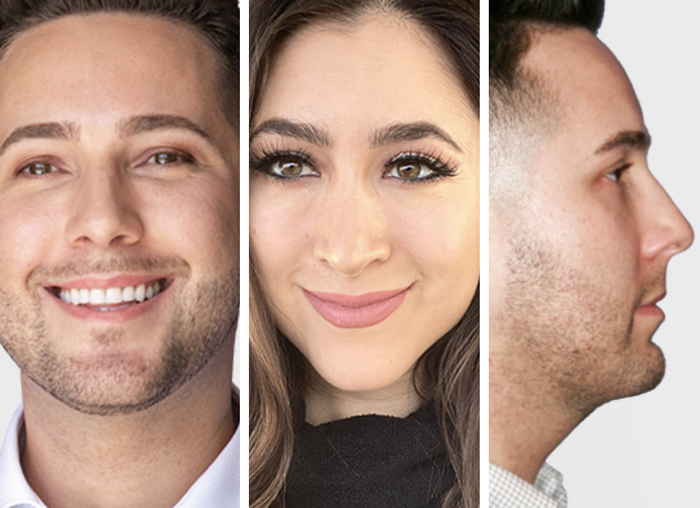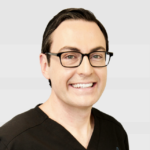Many patients seek a change to the shape or volume of their chin (genioplasty) alone or in combination with other aesthetic enhancements such as rhinoplasty (“nose job” surgery or nose reshaping) or rhytidectomy (facelift or neck lift). In most cases, the desired procedure is chin augmentation (enlargement). Making the chin bigger or giving it more shape and definition can be achieved with soft tissue fillers, biocompatible implants, or by surgical manipulation of the mandible (lower jaw bone). This procedure can also fill in the depression between the chin and the lower cheek areas along the jawline (sometimes called the pre-jowl sulcus).
Dr. Ransom performs most chin augmentation using biocompatible implants, though soft tissue fillers may be adequate and are selected in some cases. He does not recommend mandible surgery (sliding genioplasty) except in extreme cases, because of the risk to the sensory and motor nerves of the chin and mouth and the possibility of damage to the tooth roots in the lower jaw. When patients are deciding whether to pursue chin implant surgery, it is sometimes helpful to “try out” an aesthetic change by electing temporary soft-tissue filler augmentation first. Dr. Ransom uses hyaluronic acid-based fillers (Juvederm® or Juvederm Voluma®) or calcium hydroxyapatite-based fillers (Radiesse®) for temporary chin enlargement and to fill the pre-jowl sulcus. Hyaluronic acid fillers last between 6 and 12 months, depending on the individual patient’s unique skin and muscle structure and metabolism.
Explore our
Patient Gallery
*Actual patients in photos

Chin implants can be an excellent complement to rhinoplasty or facelift (rhytidectomy) and neck lift surgery. With subtle increases in the projection of the chin or the shape and contour of the chin and pre-jowl areas, significant improvements in the harmony between facial areas can be achieved. Dr. Ransom selects from the most up-to-date implant designs to provide a modern aesthetic for his patients, avoiding extreme changes or unnatural shapes. He uses only biocompatible Silastic (silicone-based) implants, which have the lowest rate of complications of all the available materials.
Who is a candidate?
Anyone who desires increased projection of the chin, a more defined jawline, or a better neck contour may be a candidate for a chin implant. A chin implant may be placed as a stand-alone procedure or combined with other aesthetic or reconstructive surgeries. In some cases, chin implants may be used to camouflage defects from previously healed trauma. The key to any facial implant surgery is identifying the most appropriate size and shape of the implant – to achieve the greatest aesthetic enhancement, while still looking natural. Dr. Ransom will work closely with you throughout this process.
Frequently Asked Questions
Please note that all patients are different and individual healing times and results may vary. The statements regarding procedures and recovery made here are general rules.
Are facial implants permanent?
Are silicone chin implants safe?
Can a chin implant improve jawline?
Can chin implant be removed?
Can you feel chin implant?
Does chin implant help double chin?
Does insurance cover chin implants?
How are chin implants secured?
How common are chin implants?
How much do chin implants cost?
Is a chin implant permanent?
What is chin surgery called?
Dr. Evan Ransom is an Ivy League-educated and Ivy League trained Facial Plastic and Reconstructive Surgeon. He is a Double Board Certified Head and Neck Surgeon and Facial Plastic and Reconstructive Surgery and fellowship-trained in facial plastic, reconstructive, and laser surgery. His practice is in the San Francisco Bay Area, serving patients from San Francisco, Oakland, Marin County, Palo Alto, Silicon Valley, Walnut Creek, the East Bay, and all over Northern California.
 (415) 550-1077
(415) 550-1077 San Francisco
San Francisco




